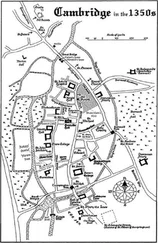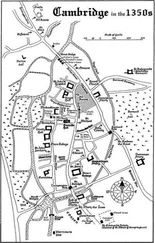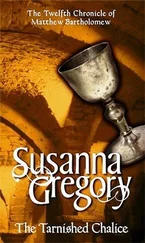Susanna Gregory - The Sacred stone
Здесь есть возможность читать онлайн «Susanna Gregory - The Sacred stone» весь текст электронной книги совершенно бесплатно (целиком полную версию без сокращений). В некоторых случаях можно слушать аудио, скачать через торрент в формате fb2 и присутствует краткое содержание. Жанр: Исторический детектив, на английском языке. Описание произведения, (предисловие) а так же отзывы посетителей доступны на портале библиотеки ЛибКат.
- Название:The Sacred stone
- Автор:
- Жанр:
- Год:неизвестен
- ISBN:нет данных
- Рейтинг книги:4 / 5. Голосов: 1
-
Избранное:Добавить в избранное
- Отзывы:
-
Ваша оценка:
- 80
- 1
- 2
- 3
- 4
- 5
The Sacred stone: краткое содержание, описание и аннотация
Предлагаем к чтению аннотацию, описание, краткое содержание или предисловие (зависит от того, что написал сам автор книги «The Sacred stone»). Если вы не нашли необходимую информацию о книге — напишите в комментариях, мы постараемся отыскать её.
The Sacred stone — читать онлайн бесплатно полную книгу (весь текст) целиком
Ниже представлен текст книги, разбитый по страницам. Система сохранения места последней прочитанной страницы, позволяет с удобством читать онлайн бесплатно книгу «The Sacred stone», без необходимости каждый раз заново искать на чём Вы остановились. Поставьте закладку, и сможете в любой момент перейти на страницу, на которой закончили чтение.
Интервал:
Закладка:
Saemund took a firmer hold on his knife. There was only one way to find out.
Historical note
In the 1960s archaeological investigations in western Greenland uncovered the foundations of a tiny church. It has been dated to about AD 1000 and is thought to have been built by Thjodhild, wife of Erik the Red; Erik founded the settlement of Brattahli? in the 980s. An unusual mass grave was discovered just to the south of it, containing thirteen adult males and a nine-year-old child. All had been buried at the same time, and, although the skeletons appear to have been deposited fairly randomly, the heads were carefully arranged in a line down the eastern side of the pit. Many show signs of violence, such as hacking injuries to the head and arms.
Several explanations have been offered for why so many men should have died at the same time. Vikings were a seafaring people, and so it has been suggested they were victims of a shipwreck on Greenland’s treacherous coast. Alternatively, they may have been the losers in a skirmish, either with a rival clan or with indigenous people. But no one knows, and the fate of these people remains a mystery.
A number of iron meteorites are recorded as having been discovered in Greenland. They were highly prized by the Greenlanders, who fashioned knives, harpoon heads and engraving tools from them. Three large ones landed east of Cape York about a thousand years ago, and, although their whereabouts was a closely guarded secret, rumours of an ‘iron mountain’ reached the British explorer John Ross in 1818. The American explorer Robert E. Peary found the meteorites in 1894, and the next year took two of them back to the United States. In 1896 Peary led an expedition to remove the largest of the meteorites, which was known as ‘Ahnighito’ and weighed between ninety and a hundred tons. Peary had it excavated but could not transport it all the way to his ship, so he returned in 1897, when he was able to take it with him back to New York. It is now displayed in the American Museum of Natural History.
Act One
Estrighoiel (now Chepstow), summer 1101
The weathered recluse was frightened. Ever since he had used the sky-stone to save Cadowan’s wife, people had been trying to find him, demanding cures. And demanding answers, too. They wanted to know how he had been able to wrest a woman from the jaws of death. Was it by God’s grace or the devil’s? All that most of them knew was that Nest claimed he had put a curiously shaped stone in her hand and urged it to heal her — and it had. Was it true? Where was this stone? Surely, if it had truly helped her, it should be in a shrine, not in the care of a grizzled, cantankerous hermit in a cave in the woods?
Ivar knew, without the shadow of a doubt, that someone was going to try to take it from him. Nest and Cadowan were good people, which was why he had helped Nest when he had come across her, twisted and broken, after her fall down the cliff. She had promised to keep silent about what had happened, but there had been witnesses — those who had chased her and driven her over the precipice in the first place — and they had accused her of being in league with Satan. To save her, her husband had told the truth, and then Nest had followed suit. Ivar did not blame them; he would probably have done the same.
But it meant that now, after years of solitude, Ivar’s sanctuary was under siege. People flocked to him with their questions, pleas and demands, and he knew he could not stay in his refuge much longer. Nest and Cadowan had tried to buy the stone from him, and when he had refused to part with it they had urged him to take it to the monastery in Estrighoiel, where Prior Odo had offered to keep it safe and use it wisely.
Ivar grimaced. Of course he had! The sky-stone would bring the little foundation great wealth, and monks, like the indolent Aidan and the fiery Marcus, would be only too grateful to spend it on themselves. Ivar had learned years ago that the inhabitants of such places were not gentle saints who dedicated their lives to God, as he had been led to believe, but were men with the usual human failings of greed and ambition.
Then there was the constable at the castle, arrived within the last few months — the constable was the man in charge of the fortress and its troops, who held his command directly from the King. Walter de Clare would love to lay his hands on the sky-stone, so he could dole out its favours to those he needed to impress. He was already regarded with fear and suspicion in his new domain, partly because of his ugly character, but mostly because of the mysterious and convenient ‘accident’ that had killed his predecessor — like Nest, Sir Drogo de Hauteville had gone over a cliff.
Walter would not come for the stone himself, of course: he was too cowardly. He would send his henchmen, battle-honed Norman knights, who would stop at nothing to carry out his orders. Two stood out to Ivar as particularly dangerous: Pigot, who was huge, strong and had a reputation for cruelty, and the angel-faced Revelle, who was too intelligent to serve a man like Walter, and so represented something of an enigma.
Ivar thought back over his life, sorry he had wasted so much of it. He could have achieved great things — it was not as if he had been short of dreams as he grew up on the Greenland farm. But after the shipwreck that had washed him up on the wild Hibernian shore so far from where he had intended to go, he had been confused and frightened. The sky-stone had saved his life, he was sure of that, and he knew it had been for a reason. But what? Everything that had once been so clear to him had become vague and uncertain.
Within days of the four survivors finding themselves thrown on to the shore, an entire army had appeared at the coast to take sail. But its leader lay near death, wounded by a battleaxe. The sky-stone had made him whole again, and suddenly the four were viewed as great healers and men of God. In appreciation, the now-healthy Rhys ap Tewdwr took them with him across a narrow sea, to where he reconquered his lost homeland and reclaimed his title as Prince of Deheubarth.
For five years they remained in Rhys’s court at Dinefwr Castle — and Ivar often pondered the safety of the sky-stone — before the Prince was killed by the Normans. Two of the shipwrecked survivors also died in the conflict, and Ivar and the other disappeared into the deep forests and crags near Estrighoiel. There, a quiet, reflective life in a hermit’s cave had not always kept the tension from building between the two. So, having always fancied himself something of an explorer, Ivar finally departed, leaving the sky-stone behind only because he sensed it did not want to leave the wooded hills.
He had travelled far and wide, but the sky-stone was always in the back of his mind. It had taken years, but he had returned eventually, and had wept for joy when the stone lay in his hand again. It had not changed — it was still glossy, with the curious shape that might be a bird or a ship. Or even a cross, perhaps. And although he was now the only survivor, the cave was still there, hidden among the ferns and the trees. He found it was a good place in which to live, especially to a man used to polar winters.
When times were very hard, he would venture into Estrighoiel and sell remedies for various minor hurts. But he was always careful to keep the stone hidden when he applied them, so no one would know the real reason why his cures worked. It was better that way, because he sensed there was a limit to the sky-stone’s powers — use it too much, and it might not perform in the event that he needed it for himself.
And then, one day, he had happened across Nest and the men who were stalking her with lust in their eyes. Ivar could not be certain, because they kept themselves concealed, but he thought they were knights from the castle. Nest was beautiful, with long black hair and perfect features, and Ivar knew people had been bemused when she chose the plain Cadowan for her husband. But Ivar understood: Cadowan was wealthy, and well able to afford the clothes that showed off Nest’s lithe figure and the jewellery that sparkled at her slender throat and on her fingers.
Читать дальшеИнтервал:
Закладка:
Похожие книги на «The Sacred stone»
Представляем Вашему вниманию похожие книги на «The Sacred stone» списком для выбора. Мы отобрали схожую по названию и смыслу литературу в надежде предоставить читателям больше вариантов отыскать новые, интересные, ещё непрочитанные произведения.
Обсуждение, отзывы о книге «The Sacred stone» и просто собственные мнения читателей. Оставьте ваши комментарии, напишите, что Вы думаете о произведении, его смысле или главных героях. Укажите что конкретно понравилось, а что нет, и почему Вы так считаете.












